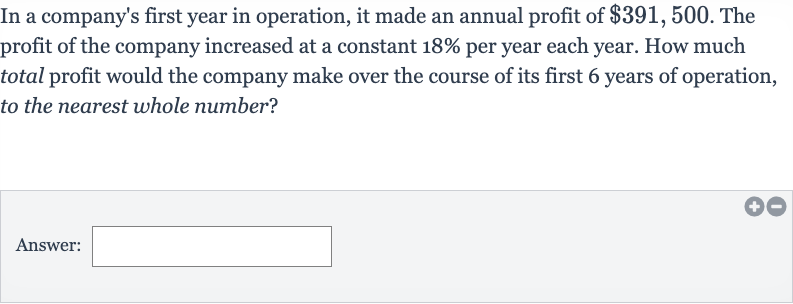AI tutor
Welcome to Bytelearn!
Let’s check out your problem:

In a company's first year in operation, it made an annual profit of . The profit of the company increased at a constant per year each year. How much total profit would the company make over the course of its first years of operation, to the nearest whole number?Answer:
Full solution
Q. In a company's first year in operation, it made an annual profit of . The profit of the company increased at a constant per year each year. How much total profit would the company make over the course of its first years of operation, to the nearest whole number?Answer:
- Identify Initial Profit: Identify the initial profit and the annual increase rate.The initial profit is , and the profit increases by each year.
- Calculate Yearly Profits: Calculate the profit for each year using the formula for compound interest: , where is the initial amount, is the rate of increase, and is the number of years.Year : Year : Year : Year : Year : Year :
- Calculate Individual Profits: Calculate the profit for each year.Year : Year : Year : Year : Year :
- Calculate Total Profit: Add up the profits for each year to get the total profit over years.Total Profit = Year + Year + Year + Year + Year + Year Total Profit = + + + + +
- Perform Addition: Perform the addition to find the total profit.Total Profit =
More problems from Exponential growth and decay: word problems
QuestionGet tutor help
QuestionGet tutor help
QuestionGet tutor help
QuestionGet tutor help
QuestionGet tutor help
QuestionGet tutor help
QuestionGet tutor help
QuestionGet tutor help
QuestionGet tutor help
